Your exterior walls are just as important as your interior walls, probably more so. But so often we leave our external walls alone when we're redecorating.
Not only will a new render greatly improve your Amble house kerb appeal, but it has a multitude of other benefits too.
Modern renders help with weather protection by withstanding adverse weather better than a traditional render, helps you save money on energy bills due to better energy efficiency, and reduces the amount of work you need to do on your Amble property to keep it looking fresh since they typically don't need frequent repainting (and some don't need any paint at all!).
But if it were as easy as simply adding a fresh coat of house render over any existing render, then you'd all be doing it yourself at home.
You have to make decisions based on building regulations, ensure the correct render materials are being used for the house (period properties will need to have renders with careful consideration for their age and look) and where it's located (coastal properties need to be better protected against rain, for example, so need external rendering that's suitable for that), and you'll need to make sure the existing external walls are sound and ready for rendering work.
But don't worry about all that, because here at MisterRender we'll talk you through everything that we check and provide you with information about a range of renders, so you understand what we'll do when rendering a house for you.
If you want to learn more about applying render to your entire house, then stick around today as we explore everything you need to know about the process before hiring someone like us to come and help!
House render is a cladding for the exterior walls of your house. It essentially acts in a very similar way to plaster on your interior walls. Not only does a new render help the way your wall looks, but it also protects the solid walls underneath it from rain penetration.
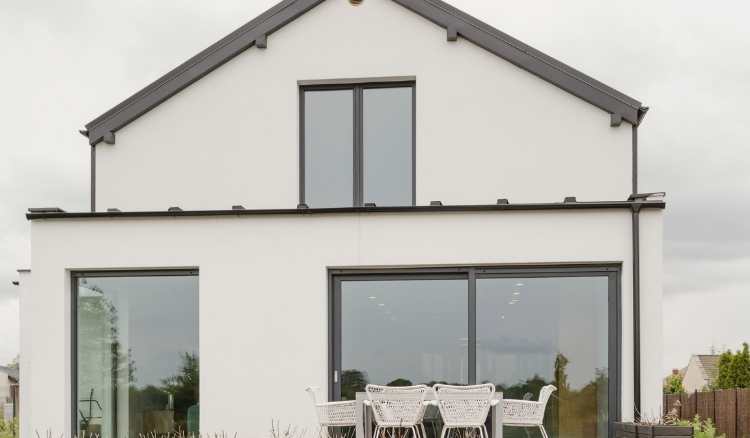
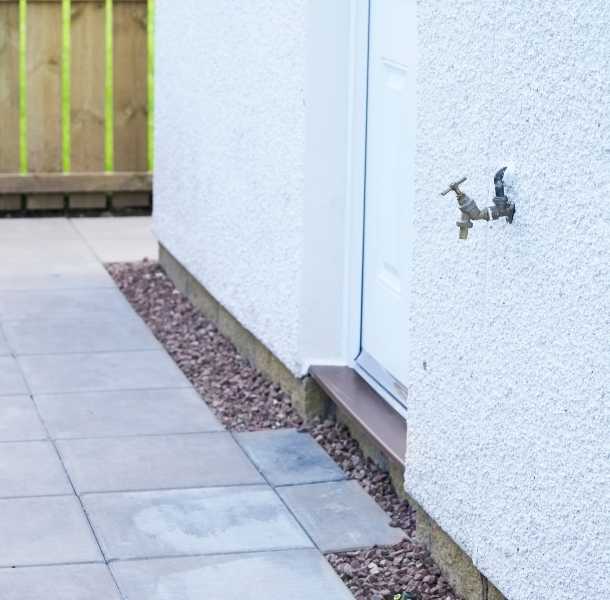
Before you start any rendering work on your house, you need to make sure you're choosing the right render for you.
Of course, aesthetic decisions play a huge part, but there are also other important factors to think of too:
Period properties will need permission from your local planning department before any render coat can be applied, and applying external wall insulation is more difficult because cavity wall insulation can't be fitted. Instead, external wall insulation here will need to be fitted and then covered with a specific render.
This, of course, would need planning permission on listed properties or properties in a conservation area - but you should know whether your property is period and therefore needs special permission from your local authority before any work can be carried out on it.
Whilst house rendering generally is an affordable solution, some render materials are cheaper than others based on their price per square metre, since multiple coats may be necessary for some, which means increased labour costs because it's more time-consuming to apply, etc.
Also, failing to choose the right render can mean spending more in the long run as rendered walls may crack if it is ill-suited to the house, and that would mean more rendering work in the future as you need to apply a new external wall covering quickly to avoid damp issues.
Rendered walls are great at protecting the structure of the walls themselves, but only if the wall is sound to begin with. If the walls are already struggling with damp, then the render finish you choose will need to take this into account and be as protective as possible.
Render applied to walls with damp issues has to be the right kind of render or else an ill-suited render can actually make the solid wall worse. Professionals, like us here at MisterRender, will examine the condition of your walls before suggesting a render that may be better suited to your house.
Another factor to consider is how energy efficient the render will be. Whenever you're rendering a house, you have to consider how the external render helps with insulating the property to bring down the cost of energy bills.
As previously mentioned, the location of your house can dictate which render is most appropriate, and that's especially true when deciding just how weather-battered your house is due to its exposure. Choosing a more effective rendering for energy efficiency is necessary in these cases.
We've already discussed the fact that those in older properties will need to get some form of permission from their local authority in order to carry out house rendering work on their house, but that doesn't necessarily mean everybody does.
If you own a terraced or semi-detached house, then the chances are you won't need permission, as rendering a house typically falls within permitted development. You'll need to be considerate to your neighbours, of course, but besides this you're usually OK to go ahead with applying render to your external surfaces.
If you're in a conservation area, then you won't typically be allowed to render walls, whether you're a terraced or semi-detached house or not, without seeking permission.
The best advice we can give as rendering specialists is to contact your local planning department and enquire whether you're in an area of conservation or a property that needs additional permission before undertaking house rendering work. It's our job to complete the render, but it's the property owner's job to ensure they are permitted to render walls on their property.
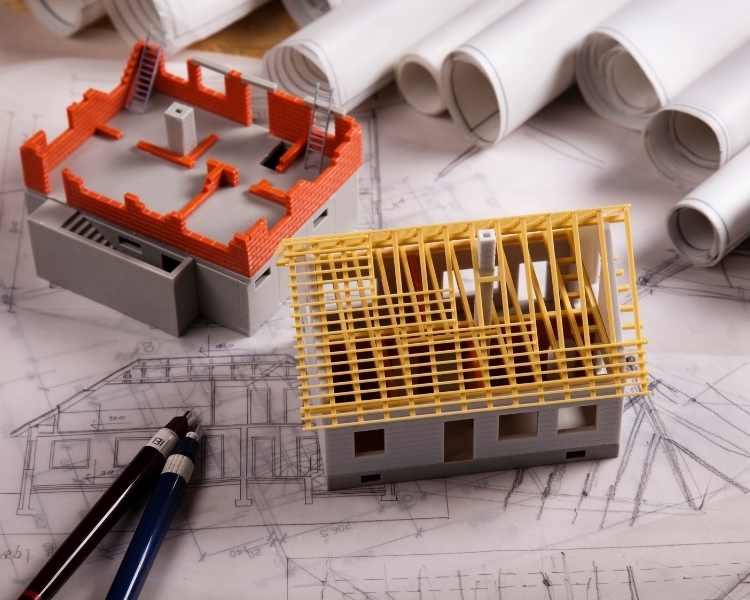
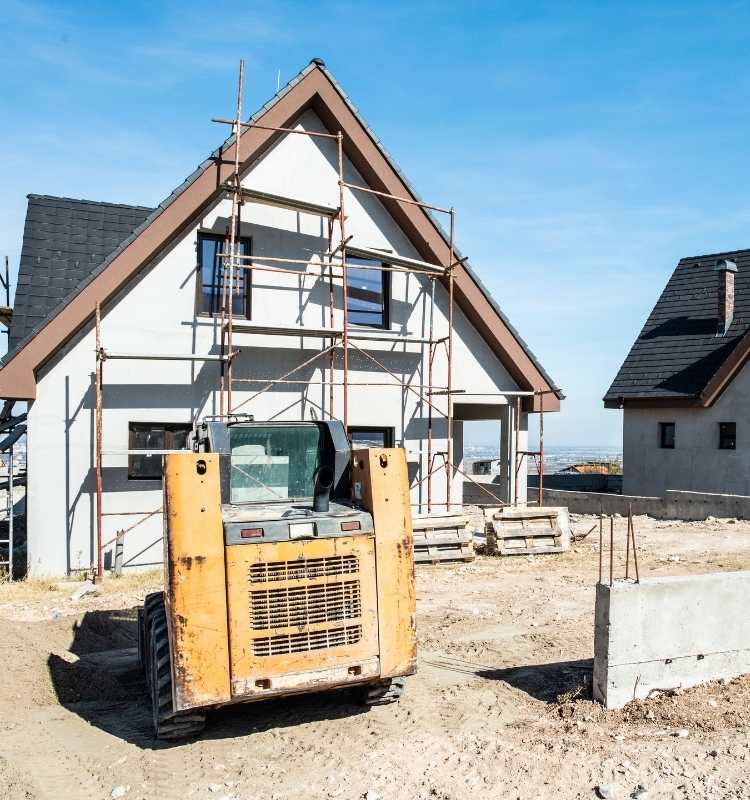
In order to help you understand which type of render might be right for you, we'll discuss the different types of render you can have on your house and the different situations they are best used for.
Of course, we'll be able to discuss options with you after an initial inspection if there are different renders that might be better suited to your circumstances.
For now, though, let's examine some of the options that are available to you:
A cement render is a popular choice because any cement based render will give a smooth finish. Any smooth render is a good choice for a modern home for the aesthetics alone.
But a cement render is not appropriate for certain properties. Older buildings with solid walls that are non-cavity won't be able to use this type of render.
It's also important to note that a cement render needs a lot of TLC to keep it looking great. Repainting with an external masonry paint every few years will be necessary to keep the render finish in top shape.
If there's any damage to your cement render, you'll also need to get it seen ASAP. Cement renders don't allow water to evaporate, so if there's a crack in any of the house rendering and water is allowed to get behind the rest of the render, it won't be able to evaporate, causing damp issues inside the home, and further damage to your render walls outside.
It is one of the cheaper render options though, and gives a stylish finish, so it remains popular despite the extra attention it needs.
Another great option is a traditional lime render. Traditional lime render is a lot more breathable than cement, which means it's best suited to older properties that need to be able to 'breathe' and allow moisture from inside to escape.
It's still an attractive option, and it's very much in keeping with the look of older, period properties. They built these homes with a need to breathe, unlike modern homes with cavity walls, so a lime render is the best option here to avoid moisture being trapped in the walls, which is a common problem when people use a cement render on older properties.
Lime renders do need some upkeep, as regular lime washes will keep the lime render looking and performing at its best.
If you have a timber-framed home, then lime renders are usually the best option for you.
An acrylic render is also a popular choice, but it tends to be used more as a finer topcoat applied in thin coats over an underlying render to enhance the look of the property, rather than as a complete render in its own right.
Acrylic renders are also some of the most durable of all renders because they have fibres mixed through the render that prevent it from cracking or breaking easily, making it a popular choice as a topcoat to protect other renders beneath.
They are, however, the least breathable of all renders, so a thorough inspection of your home is needed to make sure there are no damp or moisture problems, which may be worsened by adding an acrylic render.
They still remain popular despite this drawback, though, because they add colour and texture to a property too, drastically improving the look.
A polymer render can have either cement or lime at its based, but it has polymer and other plastic based products mixed through it to improve its durability.
With the polymer added to the mix, the rendering is much less likely to crack or break as these plastic products are much more durable, and it increases the durability of the lime or cement base that's used with it.
Polymer renders can come as a pre-coloured render, too, which means you'll no longer need to use masonry paint on the wall covering to improve its look. Since it's coloured and exceptionally durable, there's very little upkeep involved in this type of render and it's best suited to properties that are already in great shape (and for property owners who don't care for DIY).
Using a coloured render is slightly different to a polymer render because it doesn't necessarily have plastic products mixed through to improve its durability.
The advantage that coloured renders have, though, is that it's very low-maintenance, and you can actually custom-order them so that you can pick the perfect colour for your property. Since these types of renders are usually the ones you can personalise the most, they tend to be very popular.
But remember our tip from earlier, even if you don't need permission to render your house if it's a terraced or semi-detached house, you'll still want to notify your neighbours to avoid complications. And picking a garish colour might be enough to upset some of them.
Still, it's a versatile rendering option, and one that many people choose.
Silicone renders are also available in different colours, but they, of course, have silicone mixed through them to create a product that's very durable.
They're low-maintenance, have a long life, and are resistant to cracks or breaks, making them perfect for a range of properties. Again, these types of renders are more expensive because of everything they do, but that initial investment is often a wise choice because of how long silicone renders last. You certainly won't need to do it again any time soon.
Another great reason for using silicone based renders is that they're water repellent, lightweight, and very breathable, so when you add that to the range of colours that are available in this type of render, they're an obvious choice for many homeowners.
A monocouche render is another great choice, and this is another example of a through-colour render that already has colour mixed in, making it another low maintenance option.
This type of render can also be applied to most brickwork, stonework, and masonry construction with a polymer base and is one of the easiest to apply because it only needs one coat around 15mm thick to be effective.
Monocouche renders can also be applied via spray or hand trowel once mixed with water, so they can save a lot on labour costs, even if the product itself is one of the more expensive options (around 8x more expensive than cement renders).
Over time, monocouche renders will be more advantageous since redecorating won't be necessary, so despite the cost, many homeowners choose monocouche renders because of its quick application and low maintenance thereafter.
Although not as popular as it once was, pebble dash is still a valid rendering option for your home. It's cheap, cheerful, and is great at protecting the walls beneath it.
With that said, we're noticing more and more people are asking us to render over their pebble dash walls (which is possible if the pebble dash is in good shape), but there's still reasons why people might choose to use pebble dash as their render, rather than get rid of it.
This type of render is low maintenance, cheap, has a long life, and is still breathable and great at keeping the weather from affecting the walls below.
It might not be to everybody's taste, but the textured look can really make a property stand out on a street and it's incredibly hardy, so shouldn't be overlooked as a choice.
A tyrolean render is a great option for those looking for a modern finish. Currently, it's one of the most popular choices for both commercial and residential new builds, and it's most often used as a topcoat finish.
It's similar to polymer renders (and actually contains polymer within the mix) as its crack resistant and durable too, but it provides a more weathered look.
This is a popular choice because of its ability to withstand even the worst weather, and when applied correctly, it can even protect the walls beneath and prevent fracturing, and it's incredibly long-lasting and provides insulation too.
The only drawback is that the brick, masonry, or concrete beneath needs to have great suction power, so this will need to be investigated beforehand to determine whether it's appropriate for your property.
A scratch coat is typically just part of the rendering process, where you physically rough-up or scratch the under layer of the render in order to allow the top layer to stick more effectively.
But for some, a scratch coat render is the way to go. Here you actually scratch the render at the end of the application, giving a textured look that many find appealing.
Scratch coats are great for weather protection and are a popular choice in coastal areas where any rendering is likely to be roughed up by the wind and rain anyway, so choosing to finish with a scratch coat render instead makes sense. It's basically leaning into the inevitable but doing it in a stylish way that will leave the property better protected from the weather anyway.
Not every property needs a scratch coat finish, but some would definitely benefit from it. But these are all things professionals like us here at MisterRender can discuss with you before you make any final decisions.
Some clients also opt for house cladding as a way to finish their property rather than rendering. Cladding is technically a type of rendering anyway, since it does the same job, but it's often a sturdy material that's simply applied over the concrete or brickwork.
There are many types of cladding you can use - anything from timber cladding to composite cladding - and the choice you make will largely be aesthetic here (although, again, professionals can advise you if they feel the cladding you prefer is ill-suited to your property).
Cladding is a great option for many homes, though, and is especially popular with high-rise buildings and apartment blocks which need these as a cost effective way to provide insulation and protection to the taller buildings.
It's available on homes too, of course, and it might be a good option for you to consider.
If you're looking for a cost effective but hardy rendering solution, then sand and cement rendering options are a good place to start.
This type of rendering is usually cheaper than just cement alone, but they do a similar job in terms of the finished result. The main difference between sand and cement rendering and just plain cement is the look of the finish. It'll no longer be smooth when using sand and cement, but it'll still do the same sorts of jobs.
The mix is typically 1 part cement to 4 parts sand, so you can understand why it's a good money-saving choice. The cost of labour may be more for this type of render, though, as it typically takes 2-3 coats for it to protect the building effectively.
Although not quite as durable as other options (including cement alone), the cheaper initial cost and still-attractive finish makes this another popular choice.
Wet dash or roughcast rendering is another popular choice, as its method is tried and true, having been used as a form of rendering for hundreds of years.
Here, small bits of gravel are mixed into the sand and cement mix before applying to the wall (pebble dash rendering isn't the same, as it adds pebbles at the end of the application process).
This type of render is perfect for homes that need additional protection from bad weather conditions, but prefer the stones to be mixed in through the render. That way, the stones aren't visible, but they're still protective and they're still providing an interesting texture.
Wet dash is low maintenance, cost effective, and suitable for many types of homes, so it may be worth considering when rendering your home.
Technically, it's possible to render your home yourself, but it's not advisable. Not only must you be sure that you're using the right type of render, you also need to make sure it's applied perfectly the first time, or else it'll end up costing you more to fix the old issues before then having to spend money on a professional coming in to do the job again.
There's many complicated parts to rendering too, that most people don't realise. Yes, you have to apply the coats properly, but you also have to think about prepping the house beforehand. Things like removing alarm boxes, extending vents, and removing rainwater pipes so they can be fitted over the render later.
So whilst you could render your house yourself, you probably shouldn't.
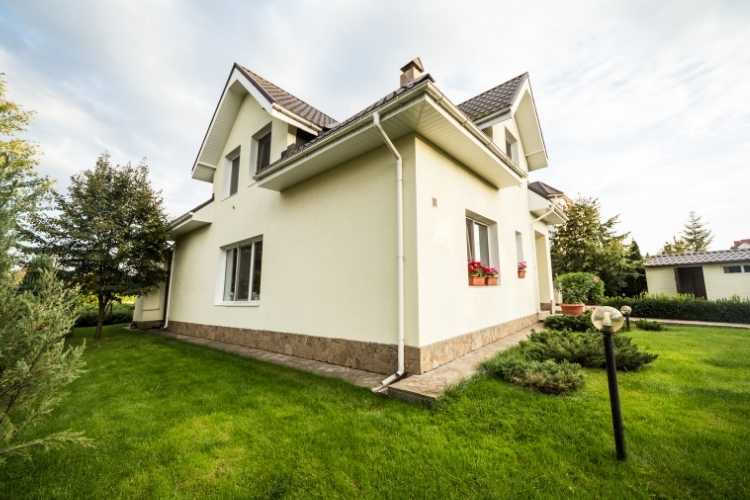

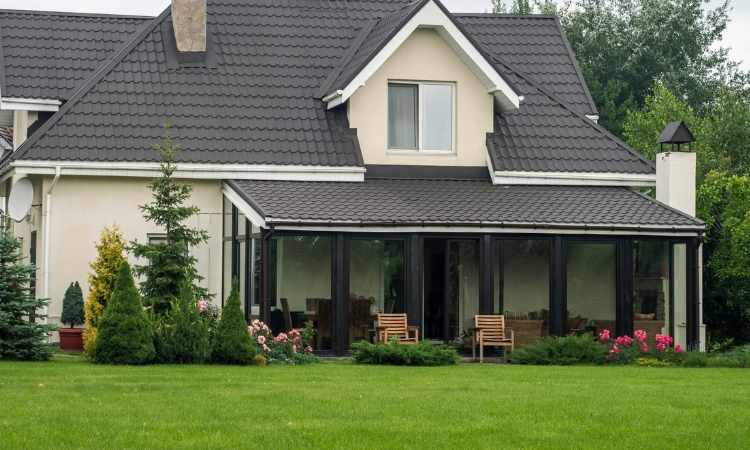
The best thing you can do is research your rendering options thoroughly (we have complete guides on all the renders we offer to give you the information you need) and then contact a professional like our Amble team here at MisterRender.
We're capable rendering professionals that can advise you about the best option for you and then carry out the work ourselves to a high standard that's sure to keep you satisfied.
So, if you're looking for a new render for your home, why not reach out and contact us today?

Repairs, upkeep, and minor improvements to your home, such as painting, do not require planning clearance. Rendering or weatherboarding your home does not require planning approval as long as the materials used are identical to those used in the original building.
House rendering, like external wall insulation, is not inexpensive – but it will produce a protective waterproof coating on the external walls, resisting water and preventing further water entry. It can also significantly improve the appearance of your property.
In the same way that rendering protects against damp, the barrier it offers increases your home's insulation and thus its energy efficiency. So, does rendering a house increase its value? Yes, both monetarily for the homeowner and for possible buyers.
No, you do not need to point before rendering because any gaps or cracks will aid in keying the render to the structure.